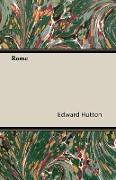Rome
BücherAngebote / Angebote:
MAN AND HIS MUSIC The Story of Musical Experience in the West ROMANTICISM AND THE 2oth CENTURY from 1800 by WILFRID MELLERS SALISBURY SQUARE - LONDON CONTENTS Page Preface ...... ix PART I INTROSPECTION AND NATIONALISM 1 Chopin, Schumann, and Mendelssohn . . 3 2 Liszt and Romantic Virtuosity . . 33 3 The Russian Nationalists . . . .49 4 The Nationalists of Central Europe . . 74 5 The Decline of Nationalism . . . 91 PART n INTROSPECTION AND ISOLATION 1 Two Song-writers . . . . 101 2 Franck and his Disciples with a Note on Skryabin 113 3 Delius, Sibelius, and Nature . . . .123 4 Debussy and Ravel ..... J3L 5 Two Traditionalists Faure and Strauss . .152 6 Elgar and Vaughan Williams . . . 166 7 Schoenberg and Hindemith . . . .182 8 Stravinsky and Bart6k . . . .198 9 Postlude Charles Ives and the New World . 218 Index of Musical Examples . . . . .226 General Index ....... 229 6 1 2703 . ILLUSTRATIONS An afternoon at Liszts . Frontispiece From M usic In the Romantic Era, by Alfred Einstein , published by W. W. JVorion Chopin ...... facing 22 From Leila, by Andre Maurois, published bj jfomlham Cape Clara Wieck . . . . . 22 Rischgitz Gilles ....... 23 Musee du Louvre Hugo Wolf ....... 134 From Hugo Wolf, by Frank Walker, published by J. M. Dent Decor of The Sleeping Princess . . . . 135 From Six Great Russian Composers, by Donald Brook, published by Rockliff Debussy . . . . . . . i o From the drawing by Jean Dulac in the possession of Mrs. E. Calvocoressi Stravinsky . . . . . . . 150 From Stravinsky in the Theatre, published by Peter Owen Page of Webern autograph score . . . 151 Universal Edition PREFACE T IKE point of view from which my share of history has been written was discussed in the Preface to The What I said then is relevant to this volume also all 1 would like to add here is a comment on the things 1 have left out, and on the proportionate amount of space 1 have given to the composers I have included. My aim has been to adapt a phrase from the Preface to The Sonata Principle to understand the relationship between the private and public life in the work of composers living between the birth of the sonata and the first two or three decades of the twentieth century. A composer such as Rameau, whose music is full of intimations of the sonata principle, none the less belongs to the world of the classical baroque, and is therefore discussed in detail in Late Renaissance and Baroque Music rather than in The Sonata Principle, Gluck, on the other hand, whose art was also rooted in the heroic ideal, reinterprets that ideal so fundamentally that he belongs to the epoch of the sonata. In this volume I end with the work of composers who may be said to have become a part of history. I include no composer born later than the early i88os, with the single exception of Hindemith, who became an Old Master and influential teacher at a phenomenally early age. I do not claim to have included all the minor composers who have preserved vitality enough to qualify as a part of history. But I do not think the composers I have omitted make much essential difference to the story of the mind of Europe . In dealing with the individual composers who make up the creative evolution of Europes music I have tried to understand rather than to evaluate. An act of understanding is, however, , an implicit evaluation so, writing as a historian rather than as a critic, I have tried to make my understanding as honest, as free from the grosser personal prejudices, as I can. Looking back on the book in retrospect, I suspect that prejudice has got the better of understanding in my discussion of at least two com posers whom I had best leave unnamed. If that is so, and I was pot able to do anything about it when I was writing the book, ix x Preface I should clearly be no more successful at a second attempt. In any case, the composer is not at the mercy of the historian he will always have the last word, if he has anything to say that is worth saying...
Folgt in ca. 10 Arbeitstagen
